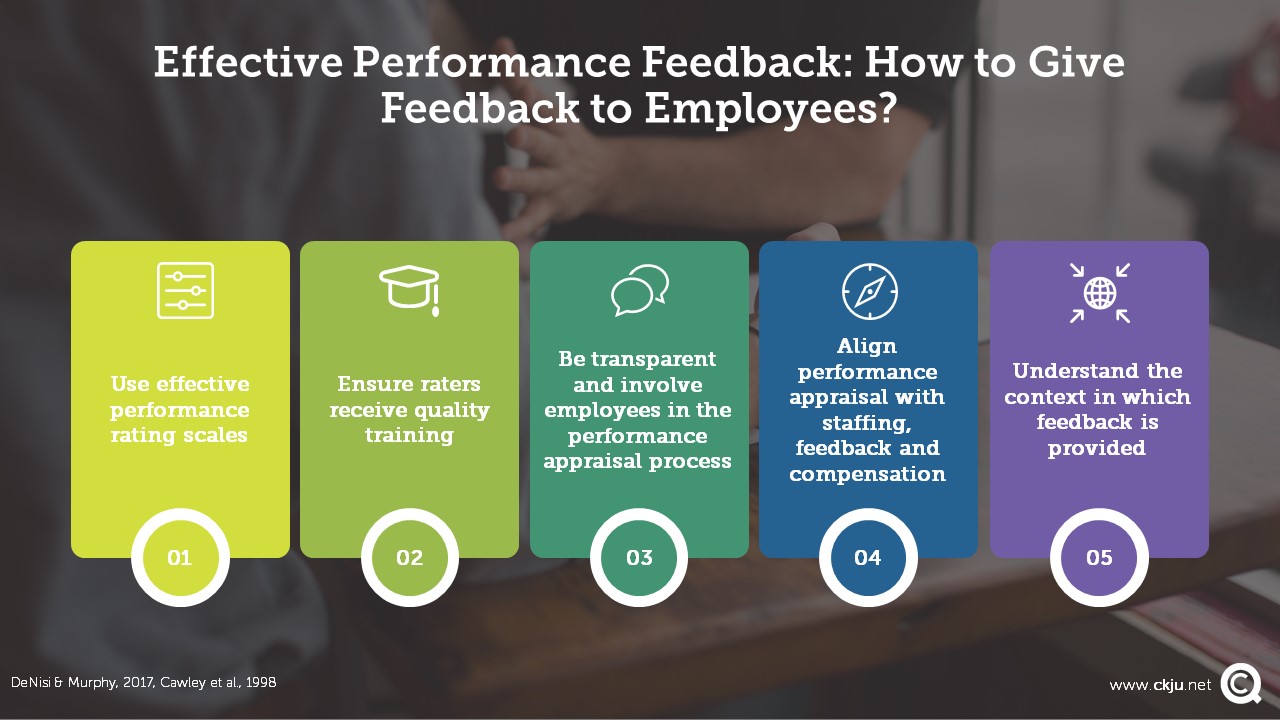
Mastering Performance Appraisals: How to Give Constructive Feedback That Inspires Growth
Performance appraisals, often seen as a necessary annual event, are far more than just a formal check-in. When done right, they are powerful tools for employee development, fostering a culture of continuous improvement, and driving organizational success. At the heart of an effective performance appraisal lies the ability to provide constructive feedback.
But what exactly is constructive feedback, and how can managers deliver it in a way that truly helps employees grow, rather than making them feel criticized or demotivated? This comprehensive guide will break down the art and science of providing impactful constructive feedback during performance appraisals, making it easy for anyone to understand and apply.
What Are Performance Appraisals? (A Quick Look)
Before diving into feedback, let’s briefly define performance appraisals.
Performance appraisals (also known as performance reviews, performance evaluations, or employee assessments) are formal processes where a manager evaluates an employee’s work performance, typically over a specific period (e.g., annually, semi-annually).
The main goals of a performance appraisal are to:
- Evaluate Performance: Assess how well an employee has met their goals and responsibilities.
- Identify Strengths: Recognize what the employee does well.
- Identify Areas for Development: Pinpoint areas where the employee can improve or grow.
- Set Future Goals: Collaborate on new objectives and development plans.
- Provide Feedback: Offer structured input on performance.
- Facilitate Communication: Open a dialogue between manager and employee.
- Support Career Growth: Help employees advance their skills and careers.
Why is Constructive Feedback So Important?
Constructive feedback is the engine that drives employee development. It’s not about pointing out flaws; it’s about providing specific, actionable insights that help an individual understand where they can improve and how to do it.
The benefits of effective constructive feedback include:
- Employee Growth & Development: It highlights specific areas for improvement, guiding employees towards better performance and new skills.
- Improved Performance: When employees know what to improve and how, their work quality and efficiency naturally increase.
- Problem Solving: It helps address issues before they become major problems, improving team dynamics and project outcomes.
- Increased Motivation & Engagement: When delivered well, constructive feedback shows an employee that their manager cares about their success and is invested in their growth, leading to higher engagement.
- Clearer Expectations: It helps bridge any gaps between a manager’s expectations and an employee’s understanding of their role.
- Stronger Manager-Employee Relationships: A trusting relationship is built when employees feel feedback is given with good intentions and for their benefit.
The Art of Providing Constructive Feedback: Key Principles
Giving effective constructive feedback is a skill that can be learned and refined. Here are the core principles to guide you:
1. Preparation is Key
You wouldn’t go into a negotiation unprepared, and a performance appraisal is no different. Thorough preparation is the foundation of effective feedback.
- Gather Specific Examples: This is perhaps the most crucial step. Don’t rely on vague statements or general impressions. Collect concrete examples of behavior or outcomes, both positive and areas for improvement.
- Example: Instead of "Your communication needs work," try "In the team meeting on October 15th, when discussing the Q3 results, you interrupted a colleague twice before they finished speaking, which made it difficult for others to follow."
- Review Job Responsibilities and Goals: Refresh your memory of the employee’s job description, key performance indicators (KPIs), and any specific goals set at the beginning of the review period. This ensures your feedback is relevant to their role.
- Consider the Employee’s Perspective: Try to anticipate how the employee might react to your feedback. Are there external factors that might have influenced their performance?
- Outline Your Talking Points: Create a structured agenda for the discussion. What are the key messages you want to convey? What specific feedback points will you address?
2. Focus on Behavior, Not Personality
This is a golden rule of constructive feedback. You are assessing what someone does, not who they are.
- Behavioral Focus: Discuss actions, choices, and their impact.
- Instead of: "You’re disorganized."
- Try: "I’ve noticed that deadlines for the last three reports were missed, and there were instances where key documents were difficult to locate quickly."
- Avoid Labels: Words like "lazy," "rude," "unprofessional" are judgmental and unhelpful. They attack the person, not the performance.
- Focus on Impact: Explain the consequences of their behavior. How did it affect the team, the project, or the company goals?
- Example: "When the client proposal was submitted with typos, it impacted our professional image and required extra time to correct."
3. Be Specific and Factual (The STAR Method)
Vague feedback is useless. Specificity makes feedback actionable. A great framework for this is the STAR method:
- S – Situation: Describe the context or situation.
- T – Task: What was the task or objective at hand?
- A – Action: What specific action did the employee take (or not take)?
- R – Result: What was the outcome or impact of their action?
Example using STAR:
- Situation: "During the recent project kick-off meeting for Project Phoenix,"
- Task: "where we needed to finalize the initial scope and allocate responsibilities,"
- Action: "you didn’t actively participate in the brainstorming session and remained quiet when asked for input."
- Result: "This led to the team spending more time trying to define your team’s deliverables, and we had to follow up with you individually later for your contributions."
4. Balance with Positive Feedback (Not Just the "Sandwich")
While the "feedback sandwich" (positive-negative-positive) is often taught, it can sometimes dilute the constructive message or make the positive feedback seem insincere.
A better approach is to ensure a genuine balance throughout the appraisal process, not just within a single feedback statement.
- Start with Strengths: Begin the appraisal by genuinely acknowledging and celebrating the employee’s achievements and strengths. This sets a positive tone and shows you recognize their value.
- Integrate Positive and Constructive: Weave positive observations into the discussion where appropriate, even when discussing areas for growth.
- Example: "Your dedication to client satisfaction is truly commendable, and I’ve seen you go above and beyond. To further enhance this, let’s discuss how we can improve your response time on urgent client requests, as this has been an area of concern recently."
- End on a Forward-Looking Note: Conclude the conversation by reiterating confidence in their ability to improve and focusing on future development.
5. Make it Timely (But Not Just Annual)
While performance appraisals are often annual, feedback shouldn’t be. Issues should be addressed as close to the event as possible.
- Ongoing Feedback: Encourage a culture of regular, informal check-ins. This makes formal appraisals less daunting and more about summarizing a continuous dialogue.
- Address Issues Promptly: Don’t wait for the annual review to bring up a significant performance issue. Address it in a timely and constructive manner when it occurs.
6. Choose the Right Setting
The environment matters.
- Private and Confidential: Always deliver constructive feedback in a private setting where both parties can speak openly without interruption or fear of being overheard.
- Neutral Ground: A meeting room or your office (if it feels neutral) is better than a public space.
- Adequate Time: Ensure you allocate enough time for the discussion, allowing for dialogue and questions. Rushing through it sends the wrong message.
7. Encourage Dialogue and Active Listening
Feedback is a two-way street. It’s a conversation, not a lecture.
- Ask Open-Ended Questions:
- "What are your thoughts on your performance in this area?"
- "How do you think that situation could have been handled differently?"
- "What support do you need from me to improve?"
- Listen Actively: Pay full attention to their responses. Listen to understand, not just to reply. Acknowledge their feelings and perspective.
- Be Prepared for Reactions: Employees might feel defensive, upset, or surprised. Remain calm, empathetic, and focus on the facts and the goal of improvement.
8. Offer Solutions and Support
Don’t just point out a problem; help them fix it.
- Collaborate on Solutions: Work with the employee to brainstorm ways they can improve. This empowers them and increases buy-in.
- Example: "What strategies could we put in place to ensure you meet deadlines more consistently?"
- Provide Resources: Offer training, mentorship, access to tools, or guidance on where to find information.
- Define Clear Next Steps: Agree on specific actions, goals, and a timeline for improvement.
- Example: "By our next check-in in 30 days, let’s aim for you to complete the online project management course and submit all weekly reports on time."
9. Focus on the Future
The purpose of constructive feedback is forward movement.
- Growth Mindset: Frame feedback around learning, development, and future success.
- Goal Setting: Connect feedback directly to new or revised goals. How will improving in this area help them achieve their objectives and career aspirations?
- Follow-Up Plan: Establish a plan for future check-ins to review progress and offer ongoing support.
Common Mistakes to Avoid When Giving Feedback
Even with the best intentions, it’s easy to fall into common feedback traps. Avoid these pitfalls:
- Being Vague: "You need to be more proactive." (What does that even mean specifically?)
- Personal Attacks or Generalizations: "You’re always so negative." or "You never listen."
- Saving Everything for the Annual Review: This builds resentment and misses opportunities for immediate course correction.
- Lack of Evidence: Delivering feedback without specific examples makes it feel arbitrary or unfair.
- Making it About Yourself: "I don’t like how you did X." (Focus on the impact on the business/team/customers, not your personal preference.)
- No Follow-Up: Giving feedback and then never checking in on progress sends a message that the feedback wasn’t important.
- Only Focusing on Negatives: Ignoring strengths and only highlighting weaknesses is incredibly demotivating.
- Dominating the Conversation: Not allowing the employee to speak, ask questions, or share their perspective.
Making Feedback a Continuous Process
The most successful organizations integrate feedback into their daily operations, moving beyond the traditional annual review.
- Regular Check-Ins: Schedule short, frequent 1:1 meetings to discuss progress, challenges, and offer quick feedback.
- Open-Door Policy: Encourage employees to seek feedback and ask questions whenever they need to.
- Informal Feedback: Provide spontaneous praise for good work and gentle course correction for minor issues in the moment.
- 360-Degree Feedback: Consider gathering input from peers, direct reports, and even clients (with discretion) to provide a more holistic view of performance.
Conclusion
Performance appraisals, when handled with skill and empathy, are invaluable opportunities for growth. By mastering the art of providing constructive feedback – by being prepared, specific, behavioral, balanced, and future-focused – managers can transform a potentially uncomfortable conversation into a powerful catalyst for employee development.
Remember, constructive feedback is a gift. It’s an investment in your team members, empowering them to reach their full potential and contribute more effectively to the success of your organization. Start practicing these principles today, and watch your team, and yourself, grow.



3 comments